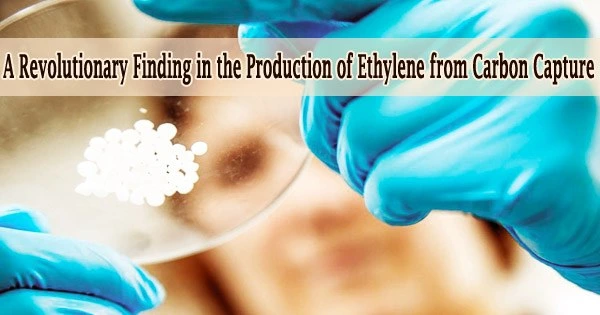Meenesh Singh and his team at the University of Illinois Chicago have found a means to completely transform the carbon dioxide extracted from industrial exhaust into ethylene, a crucial component of plastic manufacturing.
Their findings are published in Cell Reports Physical Science.
The UIC team’s method is the first to accomplish nearly 100% utilization of carbon dioxide to make hydrocarbons, even though researchers have been looking into the prospect of turning carbon dioxide into ethylene for more than a decade.
With the use of electrolysis, their method converts collected carbon dioxide gas into high purity ethylene, with the byproducts of other carbon-based fuels and oxygen.
Almost all of the carbon dioxide that is caught can be recycled by this process, which can convert up to 6 tons of carbon dioxide into 1 ton of ethylene. The process can be carbon negative by using renewable energy because the system is powered by electricity.
It’s a net negative. For every 1 ton of ethylene produced, you’re taking 6 tons of CO2 from point sources that otherwise would be released to the atmosphere.
Meenesh Singh
In Singh’s opinion, the strategy used by his team goes beyond the net-zero carbon objective of existing carbon capture and conversion systems by actually lowering the overall amount of carbon dioxide produced by industry.
“It’s a net negative,” he said. “For every 1 ton of ethylene produced, you’re taking 6 tons of CO2 from point sources that otherwise would be released to the atmosphere.”
Previous attempts at converting carbon dioxide into ethylene have relied on reactors that produce ethylene within the source carbon dioxide emission stream. In these cases, as little as 10% of CO2 emissions typically converts to ethylene.
Later, the ethylene must be separated from the carbon dioxide in a process that consumes a lot of energy and frequently uses fossil fuels. In UIC’s method, an electric current is run through a cell that contains water-based solution in one half and captured carbon dioxide in the other.
Charged hydrogen atoms from the water molecules are drawn by an electrified catalyst into the other side of the apparatus, which is divided from it by a membrane, where they mix with charged carbon atoms from the carbon dioxide molecules to create ethylene.
Ethylene is the third-highest emitter of carbon dioxide in the world among produced chemicals, behind cement and ammonia. Ethylene is used to make chemicals for antifreeze, medical sterilizers, and vinyl siding for homes in addition to plastic products for the packaging, agricultural, and automotive industries.
Typically, steam cracking, a process that calls for a lot of heat, is used to produce ethylene. Per ton of ethylene produced, cracking produces around 1.5 metric tons of carbon emissions.
Around 160 million tons of ethylene are typically produced by industry each year, resulting in more than 260 million tons of carbon dioxide emissions globally.
The UIC researchers’ electrolysis method allowed them to manufacture other carbon-rich compounds useful to industry in addition to ethylene. A very high solar energy conversion efficiency was also attained, with 10% of the energy from the solar panels being converted directly into carbon product production.
This is well above the state-of-the-art standard of 2%. The efficiency of solar energy conversion for all the ethylene they produced was about 4%, or almost the same as photosynthesis.





